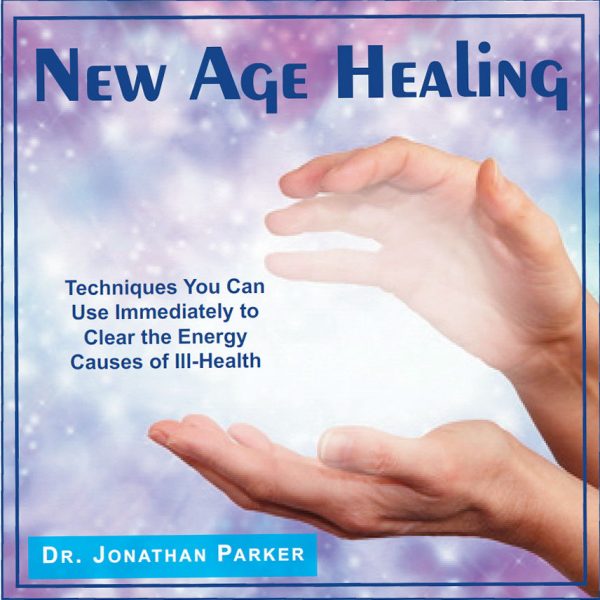Forehead Lines and Their Connection to Personality

Before diving in, please note: This post is for informational purposes only. If you’d like to know more about how we approach topics, feel free to check out our friendly Disclaimer Page.
Hey there, amazing readers! 
We’re committed to delivering quality posts, and your support (even just sticking around despite the ads) means everything to us. So, bear with us, and thanks for helping us keep the good vibes rolling. Now, on to the fun stuff!
TRANSLATE BUTTON AT THE END OF THE ARTICLE
A Quick Overview
Forehead lines, also known as wrinkles or furrows, are a common sign of aging that can appear on the forehead as a result of various factors.
While many people may view forehead lines as simply a cosmetic concern, some believe that these lines could be connected to an individual’s personality traits.
In this article, we will delve into the world of forehead lines, exploring their types, causes, and the potential link to personality.
We will also discuss scientific studies on this topic and provide tips on caring for and minimizing forehead lines.
Whether you are curious about the relationship between your forehead lines and your personality or simply looking to better understand this natural part of the aging process, this article aims to provide you with valuable insights.
Introduction to Forehead Lines
Forehead lines are creases or wrinkles that develop on the forehead over time.
These lines are a common sign of aging and can be caused by a variety of factors, including sun exposure, genetics, and repetitive facial expressions.
Forehead lines can vary in depth and appearance, ranging from fine lines to deep furrows.
While some people may develop forehead lines earlier in life due to genetic predisposition or environmental factors, others may not see noticeable lines until later in life.
Regardless of when they appear, forehead lines are a natural part of the aging process and can be influenced by a range of factors.
Understanding Forehead Wrinkles
Forehead wrinkles are typically classified into two main categories: dynamic wrinkles and static wrinkles.
Dynamic wrinkles are caused by repetitive facial movements, such as frowning or raising eyebrows.
These wrinkles appear when the facial muscles contract and relax over time, eventually leading to the formation of visible lines on the forehead.
Static wrinkles, on the other hand, are more permanent and are present even when the facial muscles are at rest.
These wrinkles are often deeper and more pronounced than dynamic wrinkles, making them more challenging to treat.
Types of Forehead Lines
There are several types of forehead lines that can develop as a result of aging, genetics, or lifestyle factors.
Some common types of forehead lines include:
Horizontal forehead lines: These lines run horizontally across the forehead and are often associated with aging and sun damage.
Vertical forehead lines: Also known as frown lines or "11" lines, these vertical lines appear between the eyebrows and can be caused by repetitive facial expressions or muscle movements.
Forehead creases: These deep lines or furrows can develop on the forehead and are often more pronounced in individuals with expressive facial features or those who frequently raise their eyebrows.
Each type of forehead line may be influenced by different factors, and understanding the specific characteristics of these lines can help individuals determine the best approach to caring for and minimizing their appearance.
Causes of Forehead Lines
Forehead lines can be caused by a combination of factors, including:
Aging: As we age, the skin loses collagen and elastin, leading to a loss of elasticity and the development of wrinkles.
Sun exposure: UV rays can damage the skin and accelerate the aging process, leading to the formation of wrinkles, including forehead lines.
Genetics: Some individuals may be genetically predisposed to developing forehead lines at an earlier age due to inherited traits.
Facial expressions: Repetitive facial movements, such as frowning, squinting, or raising eyebrows, can contribute to the formation of forehead lines over time.
Lifestyle factors: Smoking, poor diet, and lack of skincare can all play a role in the development of forehead lines and other signs of aging.
By understanding the various causes of forehead lines, individuals can take steps to minimize their appearance and maintain healthy, youthful-looking skin.
Link Between Forehead Lines and Personality
While the idea that forehead lines could be connected to personality traits may seem unconventional, some believe that there is a potential link between the two.
According to proponents of this theory, certain personality traits and emotional tendencies may be reflected in the appearance of forehead lines.
For example, individuals who are more prone to stress, anxiety, or negative emotions may exhibit deeper forehead lines due to increased muscle tension and repetitive frowning.
Understand the Powerful Law of Karma and Its Impact – Explore Here!
Conversely, those who are more relaxed, optimistic, or expressive may have fewer visible forehead lines as a result of their facial expressions and muscle movements.
Forehead Lines and Emotional Expression
Forehead lines are closely tied to emotional expression, as they often develop as a result of frequent facial movements and gestures.
Individuals who are more expressive or emotive may be more likely to develop visible forehead lines, especially if they frequently furrow their brows, raise their eyebrows, or make other facial expressions.
These lines can serve as a physical representation of an individual’s emotional tendencies, reflecting their overall demeanor and personality traits.
By paying attention to their forehead lines, individuals may gain insights into their emotional expression and how it impacts their overall appearance.
Personality Traits Linked to Forehead Lines
While the connection between personality traits and forehead lines is not universally accepted, some experts suggest that certain traits may be associated with the development of specific types of lines.
For example, individuals who are perfectionistic, detail-oriented, or prone to worry may develop more pronounced horizontal forehead lines due to increased stress and tension.
On the other hand, individuals who are more carefree, spontaneous, or optimistic may exhibit fewer forehead lines or creases, reflecting their relaxed and positive outlook on life.
By examining the types and characteristics of their forehead lines, individuals may uncover potential links to their personality traits and emotional tendencies.
Can Forehead Lines Change with Personality?
While forehead lines are primarily influenced by genetic factors, aging, and lifestyle habits, some believe that these lines may change over time in response to shifts in personality or emotional state.
For example, individuals who undergo significant life changes, such as reducing stress, practicing mindfulness, or adopting a more positive mindset, may see improvements in the appearance of their forehead lines.
By actively working to change negative thought patterns, manage stress, and cultivate a more optimistic outlook, individuals may be able to minimize the development of new forehead lines and soften existing lines.
While the relationship between personality and forehead lines is complex, making positive changes in one’s emotional well-being may have a noticeable impact on the appearance of these lines.
Scientific Studies on Forehead Lines
Scientific research on the link between forehead lines and personality is limited, and more studies are needed to fully understand this potential connection.
However, some studies have explored the role of facial expressions and emotional expression in the development of wrinkles, including forehead lines.
One study published in the Journal of Clinical and Aesthetic Dermatology found that individuals who exhibited more negative facial expressions, such as anger or sadness, had more pronounced wrinkles on their face, including the forehead.
Another study in the journal PeerJ suggested that personality traits, such as neuroticism and conscientiousness, may influence the development of facial wrinkles.
Caring for Forehead Lines
Caring for forehead lines involves a combination of skincare practices, lifestyle changes, and cosmetic treatments.
Some tips for caring for forehead lines include:
Use sunscreen daily to protect the skin from UV damage and prevent premature aging.
Stay hydrated and maintain a healthy diet to support skin health and elasticity.
Avoid smoking and limit alcohol consumption, as these habits can accelerate the aging process and contribute to the development of wrinkles.
Incorporate anti-aging skincare products, such as retinoids, hyaluronic acid, and peptides, into your skincare routine.
Consider cosmetic treatments, such as Botox injections, dermal fillers, or laser resurfacing, to minimize the appearance of deep forehead lines.
By adopting a comprehensive approach to skincare and making healthy lifestyle choices, individuals can effectively care for their forehead lines and maintain a more youthful appearance.
Minimizing Forehead Lines
Minimizing forehead lines can be achieved through a combination of preventive measures, skincare products, and cosmetic procedures.
Some effective ways to minimize forehead lines include:
Practice facial exercises to strengthen facial muscles and improve skin tone.
Use moisturizers and serums that contain ingredients like vitamin C, retinol, and collagen to promote skin elasticity and reduce the appearance of wrinkles.
Consider professional treatments, such as chemical peels, microdermabrasion, or microneedling, to stimulate collagen production and improve skin texture.
Discuss cosmetic procedures with a dermatologist or plastic surgeon, such as Botox injections or dermal fillers, to target specific areas of concern on the forehead.
Maintain a healthy lifestyle, including regular exercise, balanced nutrition, and adequate sleep, to support overall skin health and minimize the effects of aging.
By taking a proactive approach to minimizing forehead lines and addressing the underlying causes of wrinkles, individuals can achieve smoother, more youthful-looking skin over time.
Embracing Your Forehead Lines
Instead of viewing forehead lines as flaws or imperfections, consider embracing them as a natural part of the aging process and a reflection of your unique journey.
Your forehead lines may tell a story of laughter, concern, surprise, and joy, each line representing a moment in time and a memory to cherish.
By accepting your forehead lines with grace and confidence, you can celebrate the wisdom and experience they symbolize, rather than striving to erase or conceal them.
Embracing your forehead lines is a powerful statement of self-acceptance and authenticity, reminding you that beauty is not defined by age or perfection but by the depth of character and resilience within.
Conclusion
Forehead lines are a common feature of aging that can be influenced by a variety of factors, including genetics, lifestyle habits, and emotional expression.
While the connection between forehead lines and personality traits is still a topic of debate, some believe that there may be a link between an individual’s emotional tendencies and the appearance of their forehead lines.
By understanding the different types of forehead lines, their causes, and potential treatments, individuals can take proactive steps to care for and minimize the effects of aging on their skin.
Whether you choose to embrace your forehead lines as a unique part of your story or seek ways to minimize their appearance, remember that true beauty lies in self-acceptance and confidence, embracing the journey of aging with grace and resilience.

The Enlightenment Journey is a remarkable collection of writings authored by a distinguished group of experts in the fields of spirituality, new age, and esoteric knowledge.
Understand the Powerful Law of Karma and Its Impact – Explore Here!
This anthology features a diverse assembly of well-experienced authors who bring their profound insights and credible perspectives to the forefront.
Each contributor possesses a wealth of knowledge and wisdom, making them authorities in their respective domains.
Together, they offer readers a transformative journey into the realms of spiritual growth, self-discovery, and esoteric enlightenment.
The Enlightenment Journey is a testament to the collective expertise of these luminaries, providing readers with a rich tapestry of ideas and information to illuminate their spiritual path.
Our Diverse Expertise
While our primary focus is on spirituality and esotericism, we are equally passionate about exploring a wide range of other topics and niches 

To ensure we provide the most accurate and valuable insights, we collaborate with trusted experts in their respective domains 
Our blog originally focused on spirituality and metaphysics, but we’ve since expanded to cover a wide range of niches. Don’t worry—we continue to publish a lot of articles on spirituality! Frequently visit our blog to explore our diverse content and stay tuned for more insightful reads.


































































